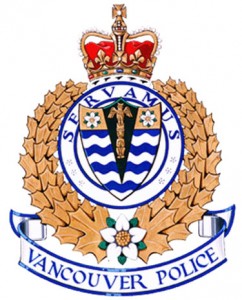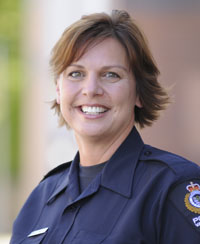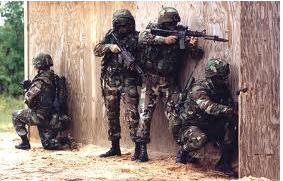 Vancouver Police launched into the Twitter community on December 9th by tweeting 100+ police calls during an intensive 15 hour period. I had (perhaps foolishly) volunteered to be the Social Media officer a few months ago when we started discussing social media, but had no idea what I was in for on December 9th. Chief Jim Chu and Director of Public Affairs, Paul Patterson, were inspired by the Greater Manchester Police’s 24 hour ‘twitterthon’ where every call was tweeted by a team of officers. Although their purpose was politically and ours more strategic, the results were fantastic for generating followers in a short amount of time.
Vancouver Police launched into the Twitter community on December 9th by tweeting 100+ police calls during an intensive 15 hour period. I had (perhaps foolishly) volunteered to be the Social Media officer a few months ago when we started discussing social media, but had no idea what I was in for on December 9th. Chief Jim Chu and Director of Public Affairs, Paul Patterson, were inspired by the Greater Manchester Police’s 24 hour ‘twitterthon’ where every call was tweeted by a team of officers. Although their purpose was politically and ours more strategic, the results were fantastic for generating followers in a short amount of time.
Prior to the media release December 7th, @VancouverPD had 32 followers. By the end of the day on December 8th we were up to 500 followers. At 8 am December 9th when I began tweeting some overnight calls there were 761 followers. During the morning I had one person assisting me as we tried to determine what types of calls we could tweet as well as the style and language to use. Throughout the day I was also kept extremely busy with media interviews over the phone; live radio interviews, and TV pieces. Although this caused disruption to the tweets for up to close to 2 hours at one point, it was a vital component of the day to help spread the word o that the Vancouver Police Department was using Twitter. We received both local and national coverage, and seemed to be the ‘talk of the town’ for the day especially once some of the calls started making the rounds. Due to privacy concerns we were not tweeting any calls of a sensitive nature such as sudden deaths, suicides, sexual assaults or domestic disturbances, and we were not identifying any locations other than the general area of the city. (Downtown, SE area etc) Several times during the day I tweeted out the information that we would not be identifying locations or specifics of the calls in order to protect the privacy of individuals involved.
As the morning progressed we were fortunate to have some calls that the public found interesting which garnered a lot of attention. The favourite tweets throughout the day were ones where there was a sense of humour or irony, such as the intoxicated woman dancing in the street impeding pedestrians and the unlucky man who was arrested for trying to steal beer from a delivery truck. People were retweeting calls and adding their own (sometimes very witty) comments along the way, and at times seemed to be very surprised about the amount of ‘regular’ type of things that the police are called for. The goal of the day was not only to gain followers, but to give them an idea of what a ‘day in the life’ of the VPD was like. I kept track of the number of followers throughout the day, and we were running an average of 100 new followers/hour, until we were up to 2950 when I called it quits at 10 pm. (We now have 4711 followers 2 weeks later)
I had virtually no experience using Twitter prior to December 9th other than following what other Police agencies were doing, so it really was a learning process throughout the day. I tried to incorporate a personal sense to tweets so that it wouldn’t be too ‘stiff’, and also included links to our website for crime prevention information and to various police units that may be of interest. In the afternoon we had an excellent ‘test case’ of when to use Twitter when there was a suspicious person in a school that created the need for a school lockdown. Unfortunately though, we were not able to link directly to our media releases which created a slight problem trying to get the full information out on Twitter.
We received excellent feedback regarding the twitter day as well as suggestions from people ‘in the know’ which have been helpful in finding our place in the world of Twitter. Overall the public seems to be very happy that we’re on Twitter, and the challenge for 2011 will be to keep them engaged and interested in @VancouverPD.
Constable Anne Longley is the Business Liaison & Social Media Officer at the Vancouver Police Department. Constable Longley is in her 20th year as a Police Officer with the Vancouver Police Department and currently works in the Community and Public Affairs Section as the Business Liaison Officer and is now also the new Social Media Officer. Cst Longley has worked in a variety of sections during her career, starting out as a patrol officer working in the downtown eastside. She also worked patrol in the downtown area and in the south west area of the Vancouver. Besides working in patrol, she’s held positions in the Youth Squad, School Liaison, Recruiting & Training Units; the 2010 Olympic Security Unit, and was Coordinator of the Traffic Authority Unit. She has a BA degree in Criminology from SFU as well as an Associate Certificate in Public Relations from BCIT.











 The Army budget morphs that of individual law enforcement agencies, but thinking outside the box seems to be consistent on the battle field. The US Army is going to equip their field soldiers on the front lines with iPhones and or Android mobile device as soon as the Spring of 2011. I originally saw an article on
The Army budget morphs that of individual law enforcement agencies, but thinking outside the box seems to be consistent on the battle field. The US Army is going to equip their field soldiers on the front lines with iPhones and or Android mobile device as soon as the Spring of 2011. I originally saw an article on 

